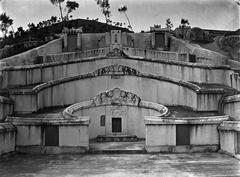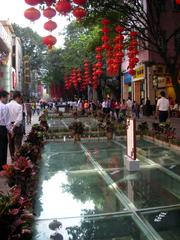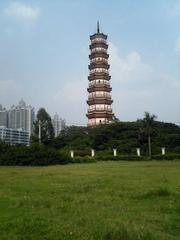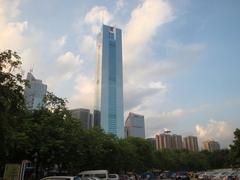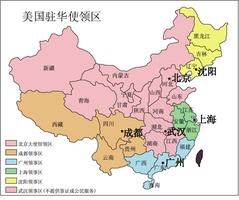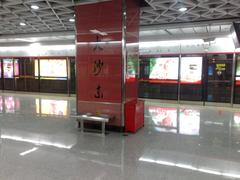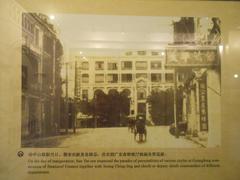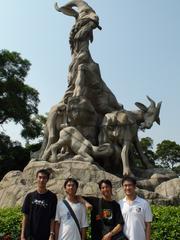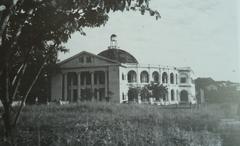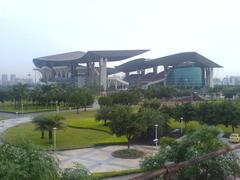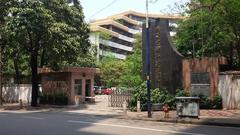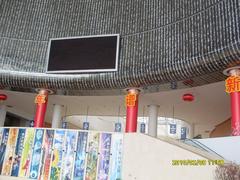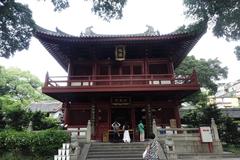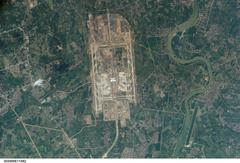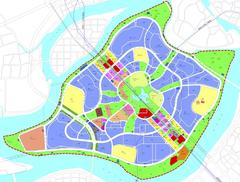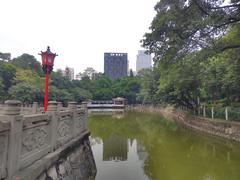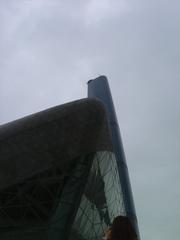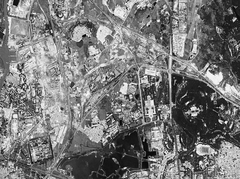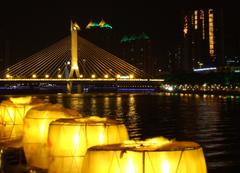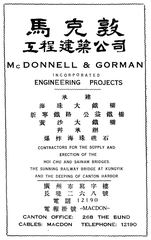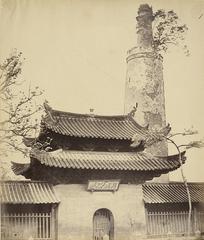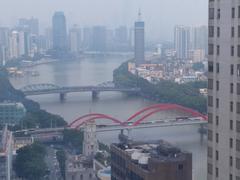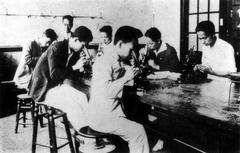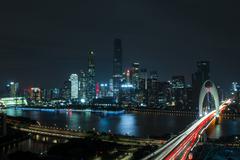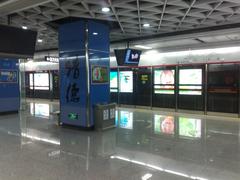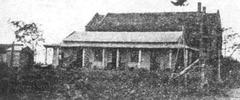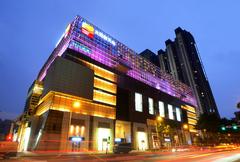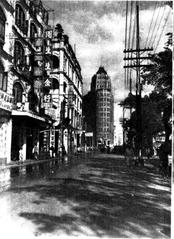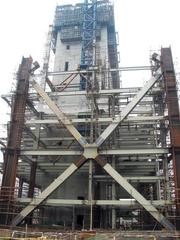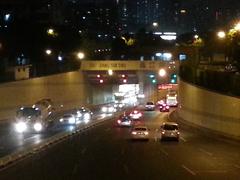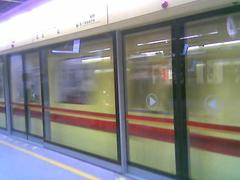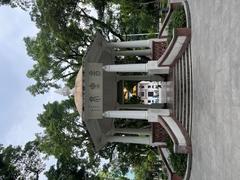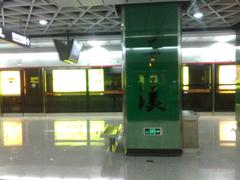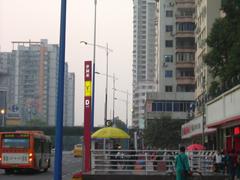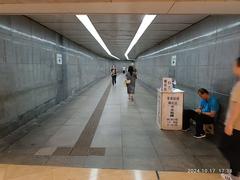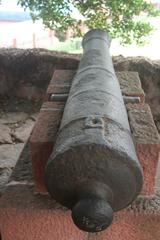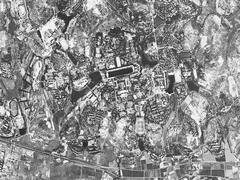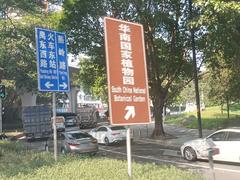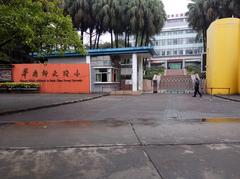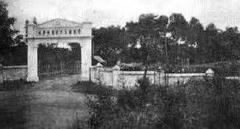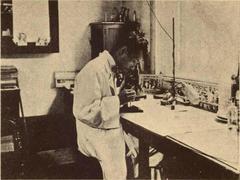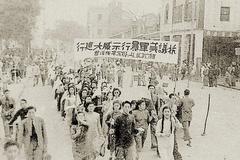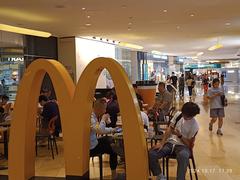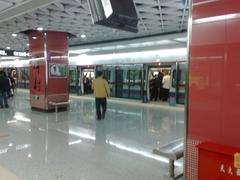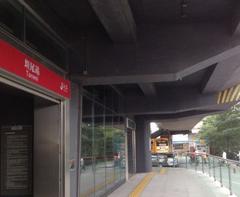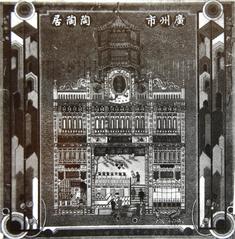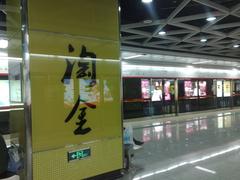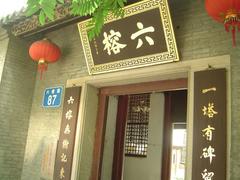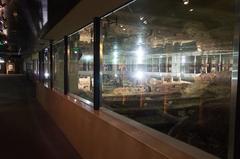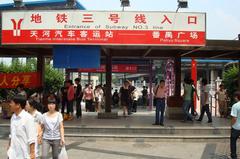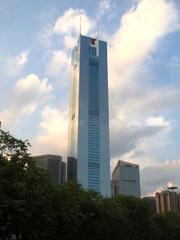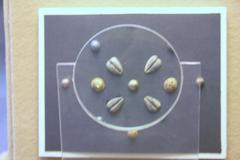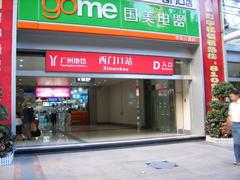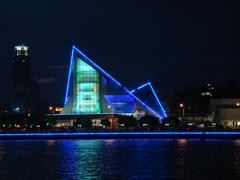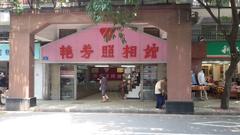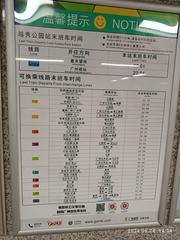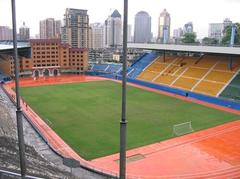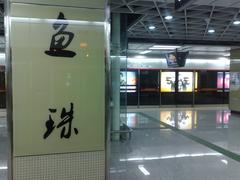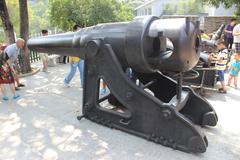Renhe Station Visiting Hours, Tickets, and Guangzhou Historical Sites Guide
Date: 15/06/2025
Introduction
Renhe Station, located in Guangzhou’s Baiyun District, serves as a modern transit hub that seamlessly connects the city’s expanding urban areas with rich historical and cultural sites. Since its inauguration in 2010 as part of Guangzhou Metro Line 3, Renhe Station has played a pivotal role in supporting the city’s rapid development and growing tourism sector, facilitating efficient access to both Guangzhou Baiyun International Airport and the vibrant city center (MetroLineMap.com; The China Journey).
Beyond its function as a transportation link, Renhe Station opens the door to a blend of historical and cultural experiences. Notably, the nearby Renhe Ancient Temple—dating back to the Ming and Qing Dynasties—offers a glimpse into traditional Lingnan architecture and Guangzhou’s enduring religious heritage (Renhe Ancient Temple Official Website; Trip.com). The Museum of the Mausoleum of the Nanyue King further enriches the area’s historical narrative, providing insight into Guangzhou’s ancient past through Western Han Dynasty artifacts (Guangzhou Tourism Board; China Discovery).
This comprehensive guide details essential information about visiting Renhe Station and its vicinity, including operational hours, ticketing, accessibility, nearby attractions, transportation options, and practical travel tips. Whether you are a commuter, history enthusiast, or cultural explorer, this resource will help you make the most of your visit.
Table of Contents
- Introduction
- Renhe Station: History and Significance
- Visiting Renhe Station: Hours, Tickets, Accessibility
- Nearby Attractions and Travel Tips
- Renhe Ancient Temple
- Museum of the Mausoleum of the Nanyue King
- FAQ
- Visuals and Media
- Conclusion and Call to Action
- References and Official Sources
Renhe Station: History and Significance
Metro Development and Urbanization
Renhe Station commenced operations in October 2010 as part of the northern extension of Metro Line 3. This addition formed a critical link between Guangzhou’s city center, Baiyun International Airport, and the rapidly developing northern suburbs. The Guangzhou Metro system, which began in 1997, now boasts over 17 lines and 700 kilometers of track, reflecting the city’s focus on urban growth and public transit accessibility (MetroLineMap.com).
Socioeconomic Impact and Urban Growth
Renhe Station has transformed its surroundings from rural lands into a bustling suburban hub. The influx of residential, commercial, and industrial developments has catalyzed property value increases and population diversity, illustrating Guangzhou’s dynamic urban evolution (The China Journey).
Regional Transportation Role
Serving as a major node on Line 3, Renhe Station provides direct metro connections to Baiyun International Airport, downtown Guangzhou, and major railway stations like Guangzhou East and South. Trains run every 5–8 minutes during peak times, ensuring Renhe is a preferred access point for travelers and daily commuters alike (MetroLineMap.com).
Visiting Renhe Station: Hours, Tickets, and Accessibility
- Operating Hours: Daily from approximately 6:00 AM to midnight (schedules may vary, check for updates).
- Ticketing: Single-journey tickets are available at multilingual vending machines. The Yang Cheng Tong card offers convenience and travel discounts (MetroLineMap.com).
- Pricing: Fares range from 2 to 10 yuan, depending on distance.
- Accessibility: The station is equipped with barrier-free features including elevators, tactile paving, and accessible restrooms.
- Guidelines: Customer service counters are available. Remain vigilant for petty theft, especially during busy hours (Trip.com).
Nearby Attractions and Travel Tips
- Renhe Ancient Temple: A historic site reflecting Lingnan architecture and spiritual traditions.
- Baiyun Mountain Park: Offers hiking trails and panoramic city views.
- Renhe Old Street: Lined with local shops and eateries showcasing authentic Cantonese culture.
- Cantonese Cuisine: Sample classic dishes in nearby markets and restaurants.
Travel Tips:
- Visit during off-peak hours for a quieter experience.
- Use local buses or taxis for flexible exploration of Baiyun District.
- Bring a camera for both modern and traditional architecture photo opportunities.
Renhe Ancient Temple
History and Cultural Significance
Renhe Ancient Temple, established during the Ming and Qing Dynasties, stands as a testament to the craftsmanship and spiritual heritage of Guangzhou. The temple’s Lingnan-style woodwork, tiled roofs, and stone carvings reflect centuries of cultural evolution. Festivals such as the Lantern Festival and Buddha’s Birthday are celebrated with lion dances and folk performances, drawing both devotees and tourists (Renhe Ancient Temple Official Website; Trip.com).
Visiting Hours and Tickets
- Opening Hours: 8:00 AM – 6:00 PM daily (last admission: 5:30 PM).
- Tickets: 30 yuan for adults. Discounts for students, seniors, and children; free entry for children under 1.2 meters.
- Purchase Methods: Tickets available onsite or through official tourism platforms (Trip.com).
Accessibility
- Ramps and elevators at entrances.
- Wheelchair-friendly pathways and accessible restrooms.
- Braille signage and audio descriptions for visually impaired visitors.
Special Events and Guided Tours
- Traditional festivals and temple fairs year-round.
- Guided tours (Mandarin and English) provide historical and architectural context—booking in advance is recommended for peak periods.
Transportation and Practical Information
- Metro: Take Line 3 to Renhe Station, Exit B, then a 10-minute walk.
- Bus: Multiple routes serve Renhe Town.
- Taxi/Ride-hailing: Drop-off available at the temple gate.
- Safety: Security personnel and CCTV ensure a safe environment.
Nearby Attractions
- Baiyun Mountain: Nature park with city views.
- Renhe Old Street: Traditional shops and local cuisine.
- Baiyun International Airport: Convenient for onward travel.
Museum of the Mausoleum of the Nanyue King
History and Significance
The Mausoleum of the Nanyue King, discovered in 1983, is the burial site of Zhao Mo, the second king of the Nanyue Kingdom (204–111 BC). The museum displays over 1,000 artifacts, such as jade burial suits and intricate gold ornaments, highlighting the blend of Han Chinese and Yue cultures (Guangzhou Tourism Board; China Discovery).
Visiting Hours and Tickets
- Opening Hours: 9:00 AM – 5:00 PM (last entry 4:30 PM; closed Mondays except public holidays).
- Tickets: 10 yuan general admission; discounts for students, seniors, and groups; children under 1.2 meters free.
- Guided Tours: Audio guides and guided tours in English and Cantonese are available.
Photography and Best Spots
Photography is permitted without flash. Don’t miss the jade burial suit and tomb murals—early visits offer the best lighting and fewer crowds.
Getting There
- Metro: Accessible from Renhe Station via Line 3.
- Airport Access: Just a 10-minute drive from Baiyun International Airport.
Accommodation Options
- Airport Hotels: Options like Crowne Plaza Guangzhou Huadu and Ausotel Smart Baiyun International Airport T2 offer convenience and amenities.
- Local Hotels: Funyard Select Hotel and others near Renhe Station.
- City Center Hotels: Accessible via Metro Line 3 for those seeking a downtown experience.
- Alternative Stays: Apartments, hostels, and B&Bs are available for longer or quieter stays.
FAQ
Renhe Station:
- Q: What are the operating hours?
A: 6:00 AM – midnight. - Q: How to purchase tickets?
A: At vending machines or with the Yang Cheng Tong card. - Q: Is it accessible?
A: Yes, with elevators and tactile paving.
Renhe Ancient Temple:
- Q: Are guided tours available?
A: Yes, in English and Mandarin. - Q: Is it suitable for mobility-impaired visitors?
A: Yes, fully accessible.
Museum of the Mausoleum of the Nanyue King:
- Q: How long is a typical visit?
A: 1.5–2 hours. - Q: Can I buy tickets online?
A: Yes, via the official website or authorized platforms.
Visuals and Media
- Photos of Renhe Station’s platforms, entrances, and maps showing proximity to Baiyun International Airport.
- Images of Renhe Ancient Temple’s main gate and interior woodwork.
- Museum highlights such as the jade burial suit and murals.
- Maps of transportation links.
- (For images, see Official Renhe Ancient Temple Website and Trip.com.)
Conclusion and Call to Action
Renhe Station is more than a transit point—it is a gateway to Guangzhou’s intertwined modernity and historical richness. With efficient metro services, barrier-free facilities, and proximity to remarkable cultural sites, it offers a rewarding experience for every type of traveler. Plan your journey today using the Audiala app for real-time updates, ticketing, and curated travel tips. Explore our related articles on Guangzhou’s metro, cultural festivals, and historic landmarks to make your visit truly memorable.
References and Official Sources
- MetroLineMap.com – Guangzhou Metro Map and Station Information
- The China Journey – Exploring Guangzhou’s Urban Development and Culture
- Trip.com – Guangzhou Travel Guide and Visitor Tips
- Official Renhe Ancient Temple Website – Visitor Information
- Guangzhou Tourism Board – Museum of the Mausoleum of the Nanyue King
- China Discovery – Guangzhou Tourist Maps and Cultural Sites
- Guangzhou Metro Official Site
- Trip.com – Renhe Ancient Temple Tickets
- Rome2Rio – Renhe Station Transport
- Booking.com – Renhe Accommodation
- NewHotels.Guide – Guangzhou Accommodation
